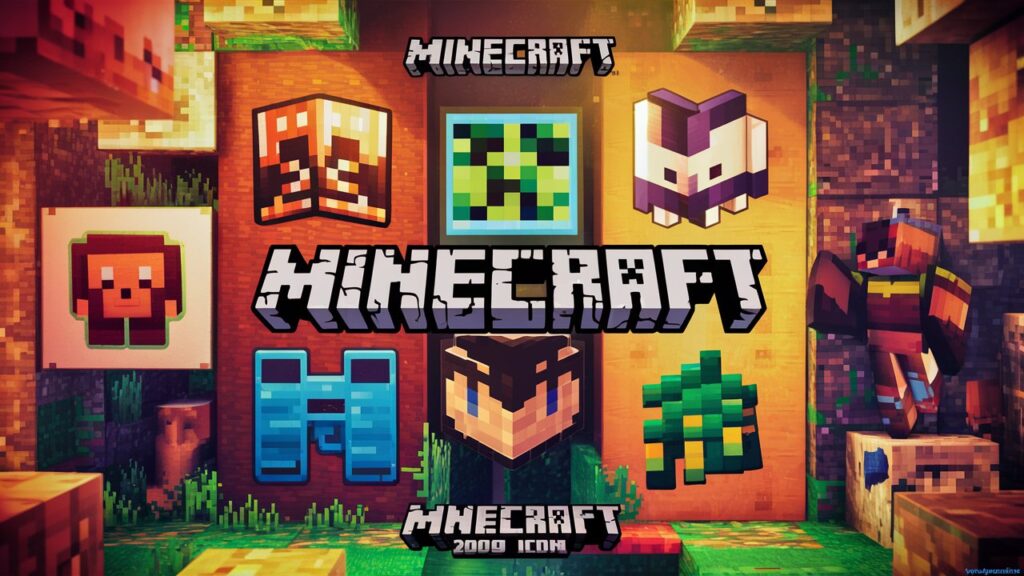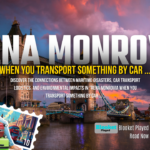Introduction
Minecraft has become a global phenomenon since its inception, captivating millions with its open-ended gameplay and creative possibilities. While the original version was released in 2009, it wasn’t until 2017 that the Bedrock Edition came into play. This edition, designed for cross-platform compatibility, introduced new features and allowed players across different devices to join forces. In this article, we will delve into the evolution of Minecraft’s game icons and banners, highlighting their significance and impact on the gaming community.
The Beginnings of Minecraft
Minecraft began its journey in 2009 as a humble project by Markus “Notch” Persson. The game was first released for PC, offering players a sandbox environment to build and explore to their heart’s content. The simplicity of its early design, featuring a blocky, pixelated world, quickly drew a dedicated following.
Development Milestones
By 2011, Minecraft was still in its alpha and beta stages. The developers continually added new features and content, enhancing the gameplay experience. This year was pivotal as it marked the game’s transition from beta to a fully-fledged release in November 2011. However, it is essential to note that no distinct game icons or banners were explicitly associated with Minecraft: Bedrock Edition during this period.
The Official Release
The official release of Minecraft in 2011 was a significant milestone. The game had matured considerably, boasting many blocks, items, and mechanics. Its icon during this period remained consistent with the classic dirt block with a grassy top, a simple yet instantly recognizable symbol that embodied the essence of Minecraft.

Introduction of Pocket Edition
In 2014, Mojang, the developer behind Minecraft, expanded the game’s reach by releasing Minecraft Pocket Edition for mobile devices. This move brought the beloved game to smartphones and tablets, allowing players to enjoy Minecraft on the go. The Pocket Edition retained the iconic dirt block as its symbol, maintaining brand consistency.
Arrival of Bedrock Edition
The landscape of Minecraft changed dramatically in 2017 with the introduction of Minecraft: Bedrock Edition. This version unified various game editions, enabling players on platforms like Xbox One, Windows 10, iOS, and Android to play together seamlessly. The Bedrock Edition was a game-changer, promoting a more inclusive and connected gaming experience.
Also Read: ARK: Survival Evolved (2017): A Comprehensive Review
Game Icons and Their Evolution
Over the years, Minecraft’s game icon has remained remarkably consistent. The iconic dirt block with a grassy top is a visual anchor for the brand, symbolizing creativity, simplicity, and the endless possibilities within the game. This consistency helped build a strong brand identity, making Minecraft instantly recognizable across different platforms and editions.
Banners and Their Role
While game icons provide a static representation of the game, banners offer more dynamic and flexible branding opportunities. Banners are often used in promotional materials, social media, and in-game events to convey updates, new features, and special occasions. In Minecraft, banners can be crafted and customized within the game, adding a layer of personalization and creativity.
In-Game Banners
In Minecraft, players can create banners using wool and dye, allowing endless customization. These banners can decorate bases, mark territories, or represent player factions. The ability to design and display custom banners adds a unique touch to the game, encouraging players to express their creativity.

Significance of Icons and Banners
Game icons and banners are crucial in a game’s branding and marketing strategy. They provide a visual shorthand for the game, making it easily identifiable and memorable. For Minecraft, the dirt block icon and the customizable in-game banners have become symbols of the game’s creativity and community-driven nature.
Cross-Platform Play and Branding
With the Bedrock Edition, Minecraft embraced cross-platform play, a feature that necessitated a consistent brand image across various devices. The iconic dirt block served as a unifying visual element, ensuring that players could recognize and connect with the game regardless of their platform.

Impact on the Gaming Community
The introduction of Bedrock Edition and its unified branding significantly impacted the gaming community. It brought together players from different platforms, fostering a sense of unity and shared experience. The recognizable icon and the ability to create custom banners within the game further strengthened the community’s bond.
Marketing Strategies
Mojang’s marketing strategies for Minecraft have always leveraged the game’s iconic imagery. The dirt block icon appears in promotional materials, merchandise, and online platforms, reinforcing brand recognition. Meanwhile, in-game banners allow dynamic marketing, promoting events and updates visually appealing.
Minecraft’s Global Reach
Minecraft’s global reach is a testament to its effective branding and marketing. The game’s consistent use of the dirt block icon and the creative use of banners have contributed to its widespread recognition and appeal. Players from all corners of the world identify with the game’s visual symbols, creating a global community of Minecraft enthusiasts.

The Future of Minecraft Icons and Banners
As Minecraft continues to evolve, its icons and banners will likely adapt to reflect new features and updates. However, the core elements, such as the dirt block icon, will remain integral to the brand’s identity. Future iterations may introduce new visual elements, but they will build upon the established legacy of Minecraft’s iconic imagery.
Conclusion
Minecraft: Bedrock Edition (2011) game icons and banners have played a vital role in shaping the game’s identity and community. While the Bedrock Edition did not exist in 2011, the evolution of Minecraft’s branding, from the classic dirt block icon to the customizable in-game banners, reflects the game’s growth and impact on players worldwide. As Minecraft continues to innovate and expand, its visual symbols will remain a cornerstone of its enduring legacy.




Pingback: halo (2003) game icons banners -